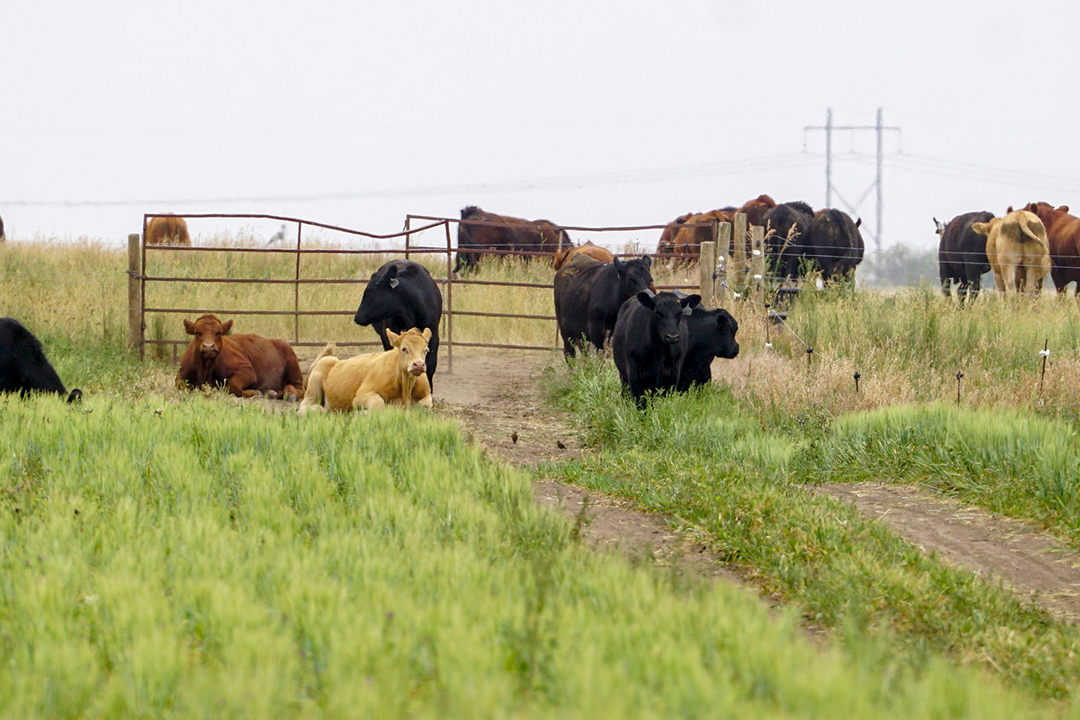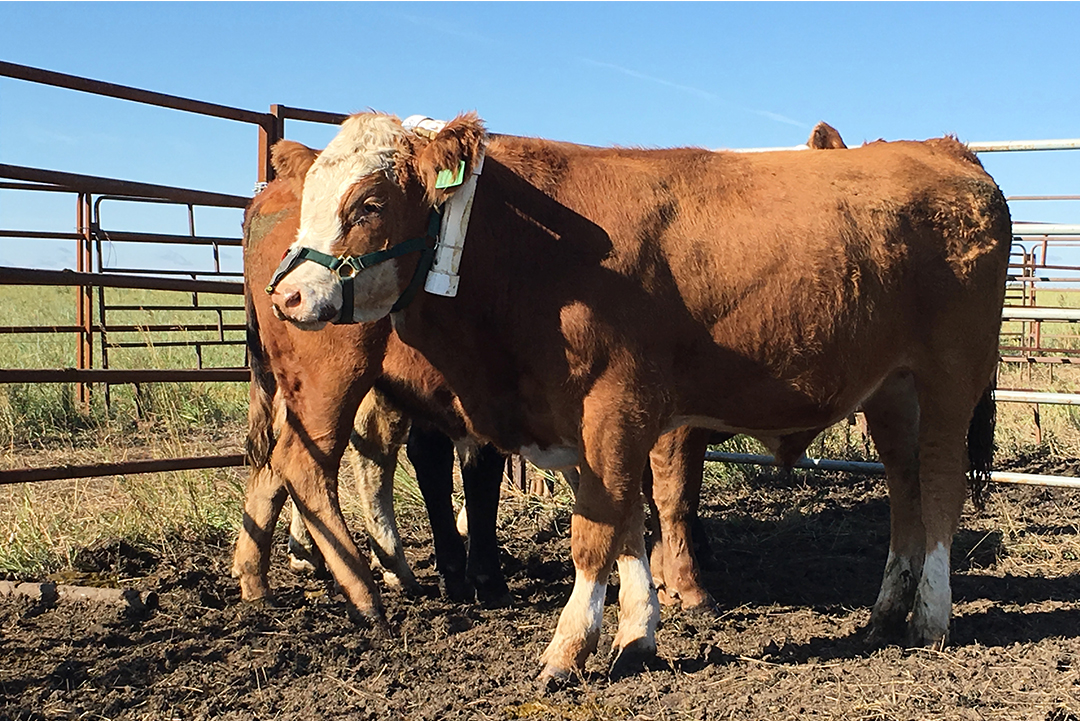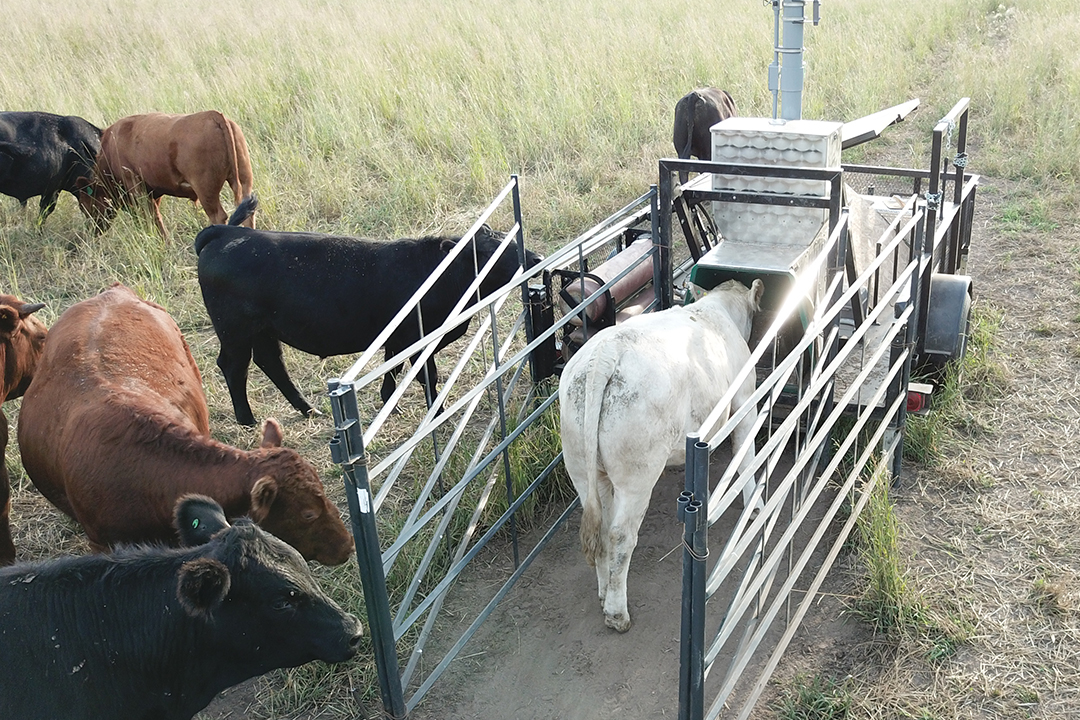Source: University of Saskatchewan, Joanne Paulson
Under his watchful eye, approximately 156 steers have been munching new forage varieties on 140 acres at the University of Saskatchewan’s Livestock and Forage Centre of Excellence, south of Clavet.
Lardner is a professor in the College of Agriculture and Bioresources’ Department of Animal and Poultry Science and also serves as the Ministry of Agriculture Strategic Research Program Chair in Cow-Calf and Forage Systems. He’s three years into a multi-year study known as “the effect of annual/perennial forage systems on several agricultural-related interfaces.”
“We’ve put in a grass species with a legume species, and we feel legumes are really the solution to the long-term needs of sequestering carbon, capturing nitrogen, yet supplying that quality grazing,” Lardner said in an interview.
It’s not just a multi-year study, which began with the first plantings in 2018, but a multi-pronged study evaluating plant production, nutritive value, animal growth and performance, and more.
“We’re also looking at the soil,” he said. “We’re hearing lots about fluctuating soil nutrient profiles, so we’re measuring the nitrogen, the phosphorus, but more importantly we’re measuring the carbon.
“And we’re also looking at water dynamics. In 2021, with the lack of moisture, we can come out of this study and say okay, if you establish these forage systems on your farm or ranch in any eco-region of the province, then you can possibly mitigate the drought, the lack of rainfall, and still get adequate growth. And that’s a really unique thing we’ve never done before.”
His team includes graduate student Megan Wasden, who hails from a cow-calf operation north of Saskatoon and has been crucial to the project. They planted two perennial systems of grass and legume species.
Along with alfalfa, they’ve established a hybrid brome grass which can be cut as hay or serve as pasture; and with the legume sainfoin they’ve added the long-standing meadow brome grass.

Alongside, the study is also evaluating annual forages, which are getting “a lot of buzz,” to see whether they fit the mid-summer to fall grazing period. The two annual treatments are fall rye with berseem clover, an annual legume; and the second is a combination of brassicas with a pea and a barley.
Admittedly, there’s a cost, but “Input costs are set off by animal growth and performance by the reduced levels of methane by the potential capture of soil carbon and soil nutrients,” he said. “That’s why those two annuals are in there.”
However, the annuals have struggled in 2021, “whereas our perennials, especially our alfalfa-hybrid brome, have come out a winner. Alfalfa legume has a deep tap root and mines lower water tables, so and it can mitigate the effects of drought.”
Still, he recommends to producers, “Don’t have all your eggs in one basket. Look at the smorgasbord of options you have out there whether you live in Eastend, Saskatchewan, or Prince Albert or Assiniboia. Look at what’s available. In my mind it’s a blend of annual and perennial systems.”
As all these parameters and systems are being studied, so is methane production, as concerns rise over animal emissions in the climate change era. Lardner and his team are using two technologies to measure how much methane the steers are emitting.

In one system, the animals are fitted with a “fancy necklace” of halter and yoke. Sulfur hexafluoride gas is mixed with methane produced in the rumen and measured through nasal vapours with a tube.
The other system operates from a solar-powered trailer set up in the paddock.
“We set it up and lure the animals to come and have a snack. They come in and visit it and while they’re consuming the treat, we’re capturing the nasal emissions. We’re evaluating the two techniques for accuracy.”

Clearly, since cattle weight is the most important outcome for producers, the team is also monitoring the animals, looking at average daily gain and calculating total beef production per acre or hectare.
The study is largely funded by checkoff through the Saskatchewan Cattlemen’s Association and also via the Alberta Beef Producers. Further funding has been provided by the Saskatchewan Agriculture Development Fund.
“Hopefully,” Lardner said, “we can make a sound recommendation that the producers can look at establishing with adequate yield, quality and biomass with a suitable gain on animals while at the same time capturing good levels of carbon and reducing methane output.”









